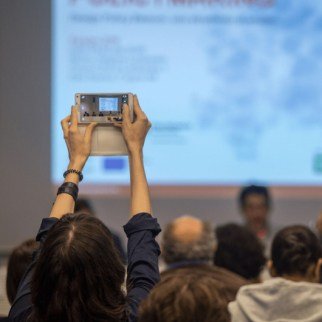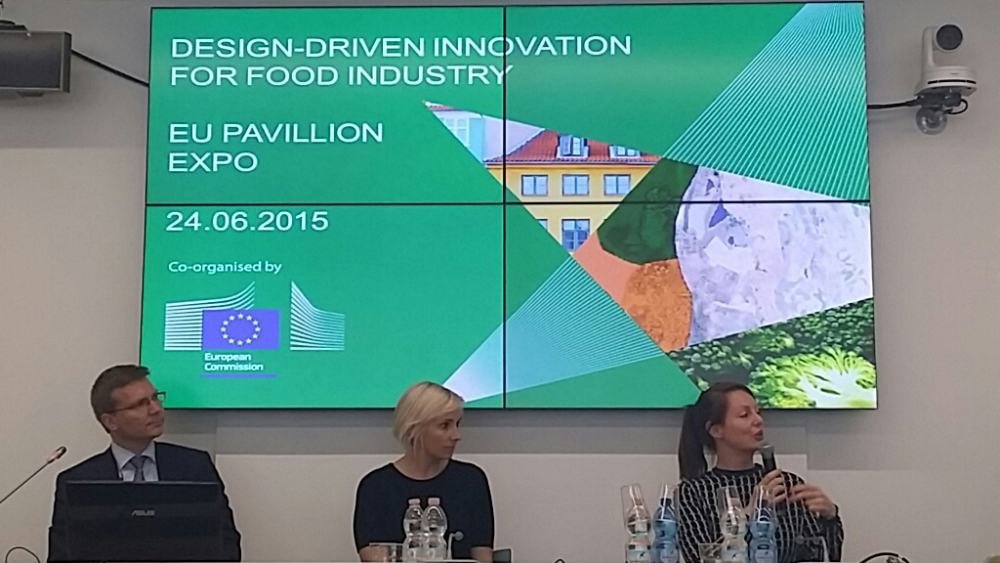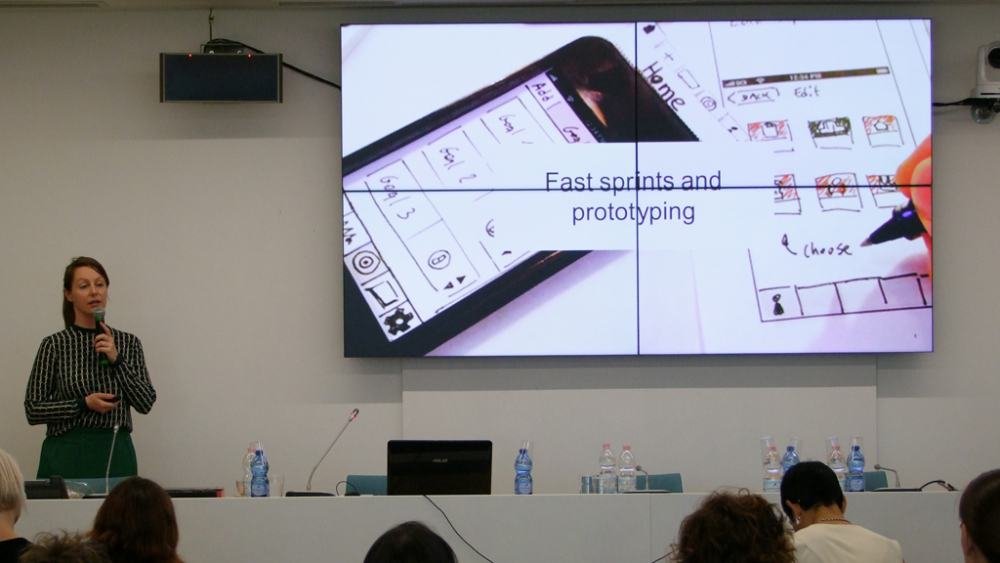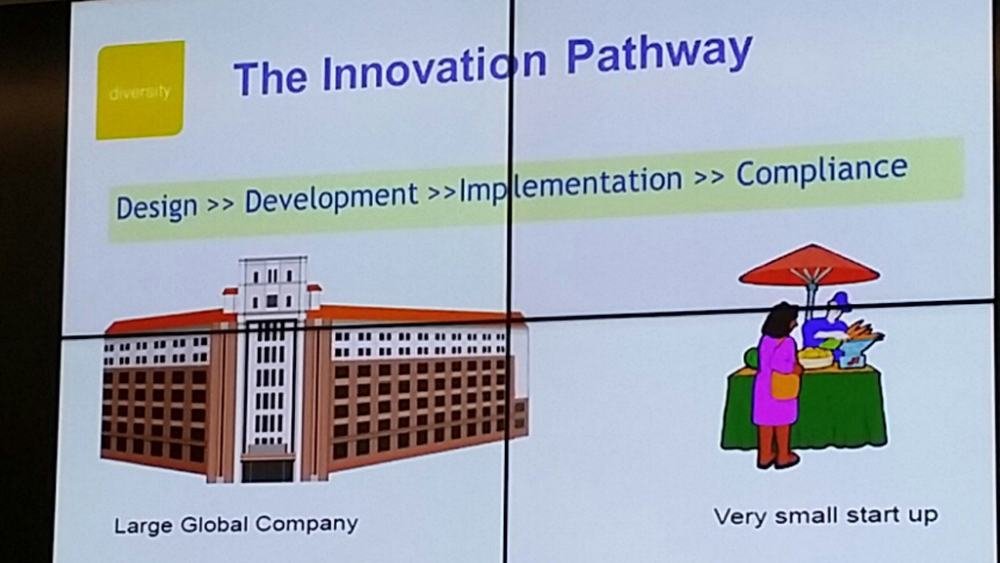Advocating for Design Support with Public Institutions

Background
Italy is world renowned for
excellence in design.
However, when looking at how
companies actually use
design, the picture portrayed by
the Innobarometer
survey is mixed. On the one
hand, Italian companies are
among the most likely in Europe
to say that design is
used as a stylistic finishing
touch. On the other hand,
Italian companies are also most
likely to say that they
do not use design at all. This
makes challenging the
entrenched assumption of design
as styling and
repositioning it as a tool for
strategy and policy
particularly difficult:
“Through Design for Europe
we have been raising
awareness of design as lever
for innovation not just
as styling and form. We have
been conducting
activities to enhance the
understanding of design at
national level, regional
level and at city level. The
debate on design and policy
is fragmented in Italy and
this was the key challenge
we sought to tackle.
Further, it is not usual to
connect design and policy.
Design for Europe has been
the best opportunity to
kick start this debate.”
Dr Marzia Mortati, Research
Fellow, Department of
Design, Politecnico di Milano,
Italy
The debate on design and policy is fragmented in Italy and this was the key challenge we sought to tackle. Further, it is not usual to connect design and policy. Design for Europe has been the best opportunity to kick start this debate.
The shift in this understanding
from design as the
final step in the innovation
process to design being
holistically integrated into
every stage of the
innovation process is permeating
multiple levels of
governance through Design for
Europe:
“The two important issues
have become clear. On the
one hand, design is becoming
a horizontal competence
within larger topics that
everybody, from citizens to
policy-makers, will need to
learn in the future. On
the other hand, there is a
growing awareness of
policies that are supporting
the development of design
as a strategic asset in our
territory as well as how
design itself can become a
tool for building public
policies”.
Matteo Brambilla, Rena, Milano
How Design for Europe helped
Alongside ongoing advocacy efforts, Design for Europe delivered a number of events in Italy. One of the most influential was Design-driven Innovation In Food Manufacturing at EXPO Milano in June 2015.
At EXPO Milano, Design for
Europe brought together
leading figures from
FoodDrinkEurope, Barilla and
Nestlé to discuss
design-driven innovation in
the food
industry. Economic and
population growth combined
with
social and technological
developments have boosted
global food production,
consumption and waste. This
represents both challenges
and opportunities for
design in the European food
industry particularly in
terms of new markets and
sustainable business models.
“One of the most
important drivers for
innovation
in the food sector is
pleasure. This is what
Italy
is an example of, and
what design could
contribute
to.”
Beate Kettlitz , Director of
Food Policy, Science and
R&D at FoodDrinkEurope
Conventionally, the role of
design in the food sector
has been restricted to
packaging and branding
rather
than user needs analysis and
new business models. The
notion of aligning user
needs with market
capabilities
was a recurrent theme at the
event.
I believe design is about understanding people. If you don’t understand who you are designing for, you will never achieve something they will ultimately desire.
“I believe design is
about understanding
people.
If you don’t understand
who you are designing
for,
you will never achieve
something they will
ultimately desire.”
Emily Boniface, Designer,
Nestlé
Design is about changing the mindset of an organisation. It means going from a traditional way of doing business to a new way that truly understands the problems of users and designs the best possible solutions for them.
The event sought to
demonstrate that innovation
processes are not always
liner and that a problem may
not be completed understood
from the outset. The
strength of design is to
manage more unpredictable
innovation processes and
involving staff from all
levels of the company, as
well as users, in
co-creating the solutions.
“Design is about
changing the mindset of
an
organisation. It means
going from a traditional
way
of doing business to a
new way that truly
understands the problems
of users and designs the
best possible solutions
for them.”
Victoria Spadaro-Grant,
Chief R&D and Quality
Officer, Barilla
Outcomes
-
€300K investment in design-related programme
-
15 young designers coached in design-thinking
-
4 Design for Europe events held in Italy over past three years
The success of
the EXPO Milano
event paved the
way for the
first high level
meeting bringing
together the
Regional
Government of
Lombardy,
the Ministry of
Research and
Education and an
array of
stakeholders at
the Design and
Policy-making
roundtable in
June 2016.
“For the first
time, we were
able to kick off
an
informed
discussion on
design and
policy in
Italy with key
decision-makers.
We were able to
involve
policy-makers
and
beneficiaries in
formulating
policy actions.”
Dr Beatrice
Villari,
Assistant
Professor,
Department of
Design,
Politecnico di
Milano,
Italy
Design and public policy are normally kept apart however, thanks to Regione Lombardia, Design for Europe, and Politecnico di Milano we’ve had an opportunity to reflect on the intersections and possible connections between these two worlds.
“Design and
public policy
are normally
kept
apart however,
thanks to
Regione
Lombardia,
Design for
Europe, and
Politecnico di
Milano
we’ve had an
opportunity to
reflect on the
intersections
and possible
connections
between
these two
worlds. This is
an interesting
perspective for
many reasons.
First of all
because the
world is getting
more complex,
and
it is important
to spend public
money wisely.
Second, because
the energy of
citizens are
playing an
increasingly
important role
and the
resources of
institutions are
diminishing so
new
ways to engage
new energies are
needed”.
Annibale D’Elia,
former Director,
Youth Policy
and Social
Citizenship,
Puglia Region
“The Lombardy
Region has
created a
dedicated
office and group
for design,
“Third Sector,
Fashion, Design,
and Tourism”.
Since three
years
this supports
design and
creativity, as
this
area is
considered
crucial for
innovation,
competitiveness
and
attractiveness
of the
region, and the
city.”
Pietro Lenna,
Director, Third
Sector, Fashion,
Design and
Tourism
As a result of
continuous
engagement,
Politecnico di
Milano supported
the Department
of Economic
Development in
the Lombardy
Region
to implement a
new design
support
programme at a
value of
€300,000 to
support young
designers to
bring a new idea
all the way to
market. The
programme Next
Design
Innovation
selected 15
designers under
the age of 35
and coached them
through the
design process
from idea
generation,
concept
development and
user insights
through to
prototype
development and
testing in the
market
with users.
Expert design mentors provided advice on materials selection, technical engineering, manufacturing processes and user testing methods. The product prototypes were showcased at Milan Design Week in April 2016 promoted by the Region of Lombardy.
“This programme
has kick-started
a larger
process of
collaboration
and discussion
around
the possible
contribution of
design to policy
as
well as
politics, where
we hope to
cooperate
more in the
future with the
Design Policy
Lab at
Polimi.”
Dr Stefano
Maffei,
Associate
Professor,
Department of
Design,
Politecnico di
Milano,
Italy
Photos from EXPO Milano 2015




